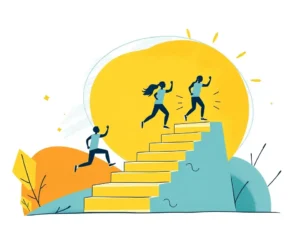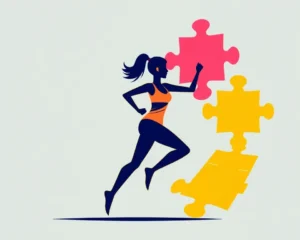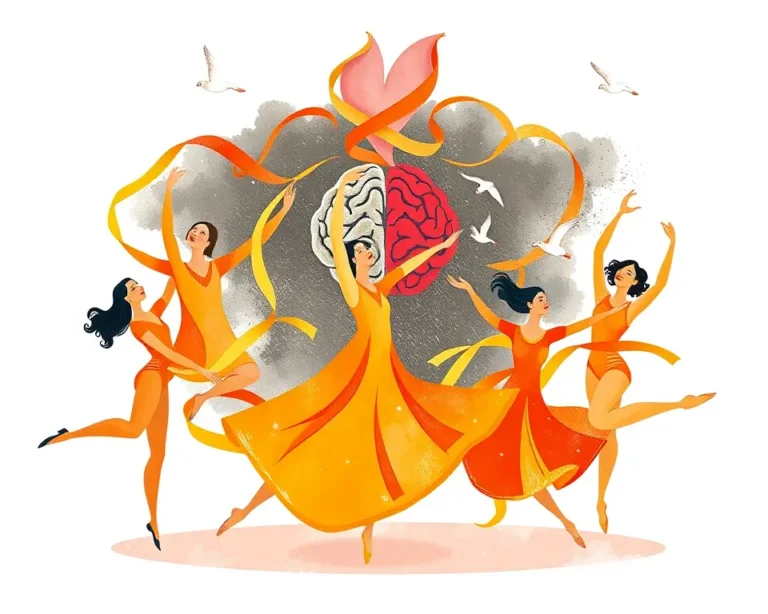Dance has been a part of human culture for thousands of years, serving as a form of expression, celebration, and social connection. But beyond its artistic and cultural significance, dancing offers a wealth of benefits for your mental health and overall well-being. Whether you’re a seasoned dancer or someone who simply enjoys moving to music, incorporating dance into your life can be a powerful tool for boosting your mood, reducing stress, and promoting a sense of calm.
Here are six ways dancing can improve your mental health and help you find your inner peace:
1. Dancing Reduces Stress and Anxiety
Stress and anxiety can take a toll on both your mental and physical health. Dancing provides a healthy and enjoyable way to manage these feelings. Studies show that dance can significantly reduce symptoms of anxiety, stress, and depression.
- Lowers Cortisol Levels: Dance helps lower cortisol, the body’s primary stress hormone. By reducing cortisol levels, dancing can alleviate the physical and psychological symptoms of stress, such as high blood pressure, anxiety, and depression.
- Activates Reward Circuits: The combination of music and rhythmic movement activates the brain’s reward circuits, easing stress and promoting relaxation. Engaging with music, especially when paired with movement, creates a “flow state” that is linked to greater life satisfaction and emotional resilience.
- Releases Tension: Dance provides an outlet for releasing pent-up tension and emotions. Physical activity helps to distract from repetitive negative thoughts and worries, offering a mental escape.
2. Dancing Improves Mood and Boosts Self-Esteem
If you’re feeling down, dancing can be a great way to lift your spirits. It promotes a positive mood and enhances self-esteem.
- Releases Endorphins: Dancing releases endorphins, natural mood boosters that create feelings of pleasure and reduce pain. These endorphins can alleviate symptoms of depression and anxiety, leading to an improved overall mood.
- Enhances Self-Esteem: Learning and mastering new dance moves can significantly improve self-esteem and confidence. Overcoming challenges and achieving progress in dance can provide a sense of accomplishment and self-worth.
- Promotes Positive Mindset: Dance encourages a positive attitude through movement and expression. The act of dancing can shift your focus from negative thoughts to the present moment, fostering a more optimistic outlook.
3. Dancing Fosters Social Connection and Reduces Loneliness
Humans are social beings, and connecting with others is crucial for mental well-being. Dancing offers numerous opportunities for social interaction and can help combat feelings of loneliness and isolation.
- Increases Social Interaction: Dance classes and social dance events provide opportunities to meet new people and build friendships. Interacting with others who share a common interest in dance can create a sense of belonging and community.
- Enhances Communication Skills: Partnered dancing requires effective communication, both verbal and nonverbal. Learning to lead and follow, as well as coordinating movements with a partner, can improve your communication skills and enhance your ability to connect with others.
- Creates a Sense of Belonging: Participating in group dances or dance communities fosters a sense of belonging and togetherness. Sharing a common activity and working towards a shared goal can create strong bonds and reduce feelings of loneliness.
4. Dancing Sharpens Cognitive Function and Memory
Dancing isn’t just good for your body and soul; it’s also beneficial for your brain. Studies have shown that dancing can improve cognitive function and memory.
- Improves Memory: Learning new dance moves and routines challenges your brain and improves memory skills. Memorizing steps and sequences can enhance cognitive abilities and help prevent age-related memory decline.
- Enhances Decision-Making Skills: Dance styles like ballroom dancing require improvisation, which improves decision-making skills. These types of dances encourage quick thinking and adaptability, enhancing cognitive flexibility.
- Sharpens the Mind: Dancing requires focus, coordination, and mental effort, which helps to keep your mind sharp. The mental stimulation of learning and performing dance routines can protect against dementia and improve overall cognitive function.
5. Dancing Encourages Self-Expression and Emotional Release
Dance provides a unique and powerful medium for expressing emotions and releasing pent-up feelings.
- Provides a Non-Verbal Outlet: Dance allows you to express emotions that may be difficult to articulate verbally. Movement can be a powerful way to communicate feelings and experiences, providing a cathartic release.
- Enhances Body Awareness: Conscious dance forms, like ecstatic dance, encourage self-discovery through unchoreographed movement, helping you get in touch with your senses. This practice can lead to a more regulated mood and a greater awareness of your emotions.
- Releases Emotional Burdens: Dance can serve as a therapeutic outlet for letting go of tension, worry, and other emotional burdens. Expressing yourself through movement can provide a sense of freedom and relief.
6. Dancing Promotes Mindfulness and Presence
In today’s fast-paced world, it’s easy to get caught up in your thoughts and worries. Dancing can help you cultivate mindfulness and stay present in the moment.
- Encourages Present Moment Awareness: Dancing requires you to focus on your body, the music, and the movements, which brings you into the present moment. This heightened awareness can help reduce mind-wandering and promote a sense of calm.
- Reduces Distressing Thoughts: Conscious dance helps individuals let go of distressing thoughts by focusing on the physical sensations and emotions that arise during movement. This practice can lead to a greater sense of inner peace and well-being.
- Enhances Emotional Regulation: By connecting with your body and emotions through dance, you can learn to manage and regulate your feelings more effectively. This can lead to greater emotional stability and resilience in everyday life.
Different Types of Dance and Their Mental Health Benefits
The great thing about dancing is that there are so many different styles to choose from, each offering unique benefits for your mental health. Here are a few popular options:
- Ballroom Dancing: Ballroom dancing, which includes styles like waltz, tango, and foxtrot, requires improvisation and quick decision-making, enhancing cognitive skills. It also promotes social interaction and provides a sense of elegance and grace.
- Zumba: This Latin-inspired dance fitness program improves mood and certain cognitive skills, such as visual recognition. The energetic music and easy-to-follow moves make it a fun and effective way to boost your spirits and get a good workout.
- Contemporary Dance: Contemporary dance emphasizes emotional expression and creativity. Its interpretive nature allows for a deep connection with your inner self, providing a therapeutic outlet for releasing emotions.
- Ecstatic Dance: This free-form dance practice encourages self-discovery through unchoreographed movement. It helps individuals connect with their bodies, release tension, and improve their overall sense of well-being.
- Dance/Movement Therapy (DMT): DMT is a psychotherapeutic approach that uses movement to promote emotional, social, cognitive, and physical integration. It is used to treat a variety of mental health disorders, including depression, anxiety, and PTSD.
Integrating Dance into Your Life
Incorporating dance into your routine doesn’t have to be daunting. Here are some simple ways to get started:
- Take a Dance Class: Look for local dance studios or community centers that offer classes in various styles.
- Dance at Home: Put on your favorite music and dance in your living room.
- Join a Dance Group: Find a social dance group or club in your area.
- Attend Dance Events: Go to dance parties or festivals.
- Practice Mindful Movement: Focus on your body and breath as you move.
The Takeaway
Dancing is a powerful and enjoyable way to boost your mental health and promote calmness. By reducing stress, improving mood, fostering social connection, sharpening cognitive function, encouraging self-expression, and promoting mindfulness, dance offers a holistic approach to well-being. So, put on your dancing shoes and dance your way to a happier, healthier you.







